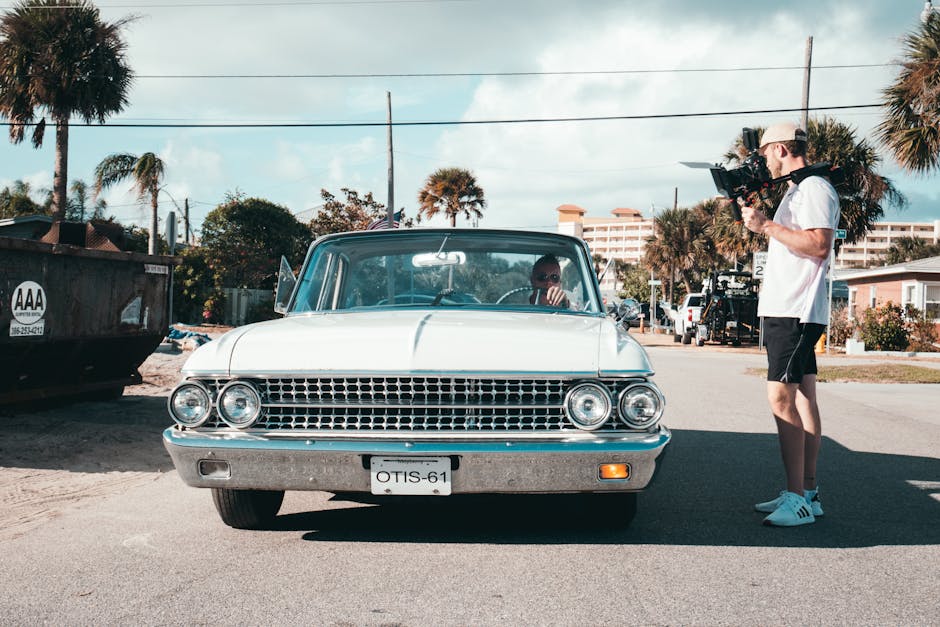Mastering Full Coverage for Leased Vehicles: A Comprehensive Guide
Leasing a vehicle can be a fantastic option for those who want a new car without the long-term commitment of ownership. However, ensuring your leased vehicle has full coverage is essential to protect yourself financially in case of accidents, theft, or other unforeseen events. In this comprehensive guide, we will delve into the intricacies of how to ensure full coverage for leased vehicles, examining the various aspects, considerations, and best practices to safeguard your investment.
The Importance of Full Coverage

When leasing a vehicle, you are essentially renting it for a specified period. Unlike owning a car, where you can choose the level of insurance coverage you carry, leasing agreements typically require lessees to maintain a certain level of coverage to protect the leased vehicle’s value. Full coverage usually includes liability, collision, and comprehensive coverage, ensuring that you are protected in a wide range of scenarios.
Without full coverage, you could be left vulnerable to significant financial loss in the event of an accident or theft. Repairing or replacing a leased vehicle can be expensive, and inadequate insurance coverage could leave you on the hook for substantial costs. By ensuring full coverage for your leased vehicle, you can have peace of mind knowing that you are adequately protected.
Understanding Liability, Collision, and Comprehensive Coverage

When it comes to insuring a leased vehicle, understanding the different types of coverage is crucial. Let’s break down the three key components of full coverage:
Liability Coverage
Liability coverage is mandatory in most states and covers bodily injury and property damage that you may cause to others in an accident. It does not cover damage to your leased vehicle but protects you from financial liability if you are at fault in an accident. When leasing a vehicle, it’s essential to carry the minimum required liability coverage to comply with your lease agreement.
Collision Coverage
Collision coverage pays for repairs to your leased vehicle if you are involved in an accident, regardless of fault. This coverage is crucial for leased vehicles, as it ensures that you are not left with repair costs that could exceed the value of the vehicle. When selecting collision coverage, consider factors like deductibles, limits, and exclusions to ensure you have adequate protection.
Comprehensive Coverage
Comprehensive coverage protects your leased vehicle from non-collision related incidents, such as theft, vandalism, or natural disasters. This coverage is valuable for leased vehicles, as it can help you replace or repair your vehicle if it is damaged or stolen. When choosing comprehensive coverage, ensure you understand the extent of coverage and any limitations that may apply.
Factors to Consider When Insuring a Leased Vehicle

When insuring a leased vehicle, there are several factors to take into account to ensure you have full coverage:
Lease Agreement Requirements
Before selecting an insurance policy for your leased vehicle, review your lease agreement to understand the minimum insurance requirements set by the lessor. Failure to meet these requirements could result in penalties or even termination of the lease. Make sure your insurance policy meets or exceeds the specified coverage limits.
Gap Insurance
Gap insurance is a valuable addition to your insurance policy when leasing a vehicle. It covers the “gap” between the amount you owe on your lease and the actual cash value of the vehicle in the event of a total loss. Without gap insurance, you could be responsible for paying the remaining lease balance out of pocket, even if your vehicle is totaled.
Deductibles
When selecting insurance coverage for your leased vehicle, consider the deductibles for each type of coverage. A higher deductible typically results in lower premiums but requires you to pay more out of pocket in the event of a claim. Evaluate your financial situation and risk tolerance to determine the appropriate deductible levels for your policy.
Additional Coverage Options
Depending on your needs and preferences, you may want to consider additional coverage options for your leased vehicle. This could include rental car reimbursement, roadside assistance, or uninsured motorist coverage. Assess your individual circumstances to determine which additional coverages are worth adding to your policy.
Common Misconceptions About Insuring Leased Vehicles

There are several misconceptions surrounding insurance coverage for leased vehicles that can lead to confusion or inadequate protection. Let’s debunk some of the common myths:
Myth: The Lessor Covers Insurance Costs
While the lessor may require you to have insurance coverage for the leased vehicle, they typically do not cover the cost of insurance. It is the lessee’s responsibility to procure and maintain the necessary insurance coverage throughout the lease term.
Myth: Personal Auto Insurance Is Sufficient
Some individuals mistakenly believe that their personal auto insurance policy provides adequate coverage for a leased vehicle. However, leased vehicles often require higher coverage limits and additional protections, making a specific policy for the leased vehicle necessary.
Myth: Insurance Premiums Are Fixed
Insurance premiums for leased vehicles can vary based on factors such as driving history, location, vehicle type, and coverage levels. It’s essential to shop around for insurance quotes and compare options to find the most affordable and comprehensive coverage for your leased vehicle.
FAQs About Full Coverage for Leased Vehicles
Q: Can I choose my own insurance provider for a leased vehicle?
A: In most cases, you can select your preferred insurance provider for a leased vehicle as long as they meet the lessor’s requirements for coverage. Be sure to inform your insurance company that the vehicle is leased to ensure you have the necessary coverage.
Q: What happens if I cancel my insurance on a leased vehicle?
A: Cancelling your insurance on a leased vehicle is a serious breach of your lease agreement and can result in significant penalties. It also leaves you financially vulnerable in case of an accident or damage to the vehicle. Make sure to maintain continuous insurance coverage for the duration of the lease.
Conclusion
Ensuring full coverage for a leased vehicle is a critical step in protecting your investment and financial security. By understanding the different types of coverage, considering lease agreement requirements, and selecting appropriate insurance options, you can safeguard yourself against potential risks and liabilities. Remember to review your insurance policy regularly, update coverage as needed, and consult with insurance professionals for guidance on securing full coverage for your leased vehicle.
When it comes to leasing a vehicle, comprehensive insurance coverage is essential for peace of mind and financial protection. By following the recommendations outlined in this guide, you can navigate the complexities of insuring a leased vehicle with confidence and security.




